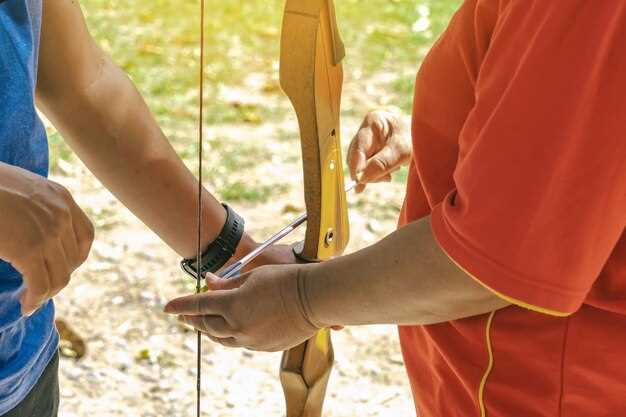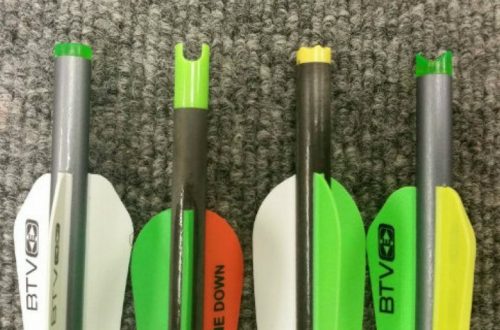
How to maintain and wax your bowstring

In the world of archery, the bowstring serves as a critical component that directly influences your shooting performance. Proper maintenance of your bowstring is essential to ensure its longevity and reliability. One of the simplest yet most effective ways to care for your bowstring is through regular waxing. Wax not only protects the fibers but also enhances the overall functionality of the string.
Over time, exposure to various elements can cause your bowstring to wear down, leading to potential issues such as fraying or loss of strength. By applying wax, you create a barrier against moisture and dirt, preventing these harmful factors from compromising your bowstring. This guide will explore the step-by-step process of waxing your bowstring, ensuring that you gain the maximum performance from your bow.
Understanding the importance of bowstring maintenance is crucial for any archer, whether a beginner or a seasoned expert. Periodic waxing can greatly extend the lifespan of your bowstring and improve your overall shooting experience. Dive into the essential practices of bowstring maintenance, and learn how to keep your gear in top shape.
Choosing the Right Wax for Your Bowstring

Selecting the appropriate wax for your bowstring is crucial to ensure optimal performance and longevity. The right wax not only protects the bowstring from wear but also enhances its maintenance. Here are key considerations when choosing wax for your bowstring:
- Type of Material: Different types of bowstrings, such as Dacron, FastFlight, or other modern materials, may require specific waxes tailored to their properties. Always check the manufacturer’s recommendations.
- Consistency: Wax comes in various consistencies, ranging from soft to hard. A softer wax is generally easier to apply and penetrates the strands more effectively, while harder wax may provide a longer-lasting solution.
- Weather Resistance: Consider how weather conditions affect your bow usage. Some waxes offer better protection against moisture and UV rays, safeguarding the integrity of your bowstring in harsh environments.
- Application Ease: Look for waxes that are easy to apply. Some come in sticks or containers that facilitate precise application, ensuring even coverage without excessive buildup.
When applying wax, remember:
- Clean the bowstring thoroughly to remove dirt and old wax.
- Apply wax generously along the length of the string, focusing on areas with the highest wear.
- Use your fingers to work the wax into the fibers, ensuring maximum penetration and protection.
- Wipe off any excess wax to prevent accumulation that could interfere with your bow’s performance.
Regular waxing and proper maintenance extend the life of your bowstring, enhancing your overall archery experience. Choose wisely, and your bowstring will thank you for it!
Step-by-Step Process for Waxing Your Bowstring

Maintaining your bowstring is essential for optimal performance and longevity. Waxing your bowstring is a crucial part of this maintenance process, providing protection and reducing wear. Follow these steps to effectively wax your bowstring.
First, gather your supplies. You will need bowstring wax, a clean cloth, and a pair of scissors. Ensure you have a quiet workspace where you can focus on the task without distractions.
Next, inspect your bowstring for any signs of damage or fraying. If you notice any significant wear, consider replacing the string before applying wax, as this will ensure the best shooting experience.
Once you’ve confirmed the string is in good condition, clean the bowstring. Use the clean cloth to remove any dirt, dust, or debris that has accumulated on the string. This step is important as it allows the wax to adhere properly to the material.
Now, apply wax to the bowstring. Take the wax and rub it directly onto the string, working from one end to the other. Be sure to cover all areas evenly. It’s helpful to use a moderate amount of wax, as too much can cause buildup and affect string performance.
After applying the wax, use your fingers to work it into the fibers of the string. This process ensures that the wax penetrates deeply, providing maximum protection. Keep rubbing the string until the wax is evenly distributed and the string feels smooth to the touch.
Once you’ve finished working the wax in, take a moment to inspect your string again. Look for any areas that may need additional wax or attention. If necessary, reapply wax to these sections.
Finally, allow the wax to cure for a few minutes before using your bow. This curing time lets the wax set properly, enhancing its protective qualities and performance. Regularly waxing your bowstring–typically every few weeks, depending on use–will keep it in excellent condition and extend its lifespan.
Signs That Your Bowstring Needs Maintenance
Regular maintenance of your bowstring is crucial for optimal performance and safety. Here are key indicators that your bowstring requires attention:
Firstly, inspect for fraying or individual strands that appear worn out. If you notice any discolored areas or broken fibers, it’s time to consider replacing the string. A damaged bowstring can compromise your shot accuracy and may cause injury.
Secondly, pay attention to the serving. If the serving is starting to loosen or has visible wear, it can lead to string separation, affecting your bow’s performance. Ensure the serving is intact and tightly bound, as this protects the main strands from excessive wear during use.
Another sign is a change in the string’s color or texture. Strings that have absorbed moisture or contaminants can lose their integrity. If the bowstring feels sticky or significantly different to the touch than when it was new, maintenance is necessary.
Additionally, listen for unusual sounds during shooting. If you hear a popping or unusual noise, it could indicate that the bowstring is overused or beginning to fail. This is a clear signal to conduct a thorough assessment.
Lastly, monitor any changes in your bow’s performance. If you notice a decrease in accuracy or an increase in vibration after the shot, these may be symptoms that your bowstring needs maintenance. Regular checks and timely maintenance can significantly enhance your shooting experience and prolong the lifespan of your equipment.




